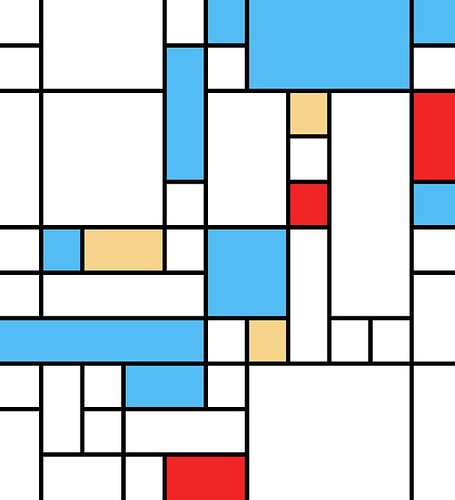Comparing fractions is a significant leap from basic fraction identification and shape partitioning. It requires students to analyze two fractions and use comparative language like “greater than,” “less than,” or “equal to.” This can be a challenging concept for young learners. This article outlines five engaging activities to make comparing fractions more accessible and enjoyable for third-grade students.
Using Art and Photography to Compare Fractions
Number Talks are a powerful tool for building mathematical understanding and communication skills. Incorporating fractions into Number Talks can be particularly engaging when using visual aids like photographs and artwork.
Projecting an image like Piet Mondrian’s artwork, with its distinct color blocks, allows students to visually identify and compare fractions represented by different colors. This approach offers multiple entry points, allowing students to participate at their own comfort level.
Other suitable images include buildings with multiple windows, organizational solutions with cubbies, and various real-world objects. The possibilities are endless!
Creating a Fraction Gallery Walk
Extend the Number Talks activity by setting up a Fraction Gallery Walk. Display various photos or artwork around the classroom, or provide copies for students’ math journals. Encourage them to identify and describe fractions within the images using drawings, words, or numbers.
To further challenge students, incorporate a word bank with comparative terms like “greater than,” “less than,” “equal to,” and “whole.” This encourages them to apply comparative language to their observations.
Scaffolding Student Learning with Visual Supports
Before students compare fractions independently, foundational knowledge is crucial. Mini-lessons focusing on comparing fractions with the same numerator, same denominator, and using benchmark fractions for comparison are essential.
Once students grasp these concepts, introduce scaffolded activities. Start with simple exercises using visual aids like fraction bars and number lines.
Dominoes or dice can be used to generate fractions for comparison. Initially, have students partition and shade shapes to visually represent the fractions. As they progress, encourage them to reason through comparisons before using visuals for confirmation. Transition to number lines to reinforce understanding in a different visual context.
Offering Choice in Comparing Fraction Activities
Student engagement thrives when given choices. Offer a variety of activities, such as “Fraction Flip & Compare” (similar to the card game War) and “Order’s Up!”
In “Fraction Flip & Compare,” students draw fraction cards and compare them. Using recording sheets helps monitor understanding, promotes accountability, and provides space for visual support.
“Order’s Up!” challenges students to order four fractions from least to greatest, using a pizza theme for added engagement. This activity increases complexity and reinforces ordering skills. Providing recording sheets and visual models continues to support student learning.
Engaging Group Games: Comparing Fractions with Kaboom!
Kaboom! is a versatile game adaptable for various skills. In this context, students draw cards with fractions and compare them, discarding “Kaboom!” cards that reset their pile. This game promotes excitement and reinforces comparison skills in a fun, competitive environment.
Utilizing engaging activities like these transforms comparing fractions from a daunting task into an enjoyable learning experience for third-grade students. These hands-on, visually-driven approaches build a strong foundation in fraction comparison, setting the stage for future mathematical success.


